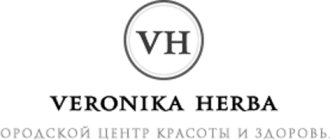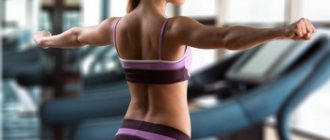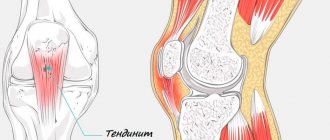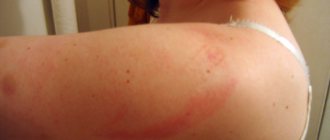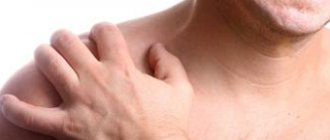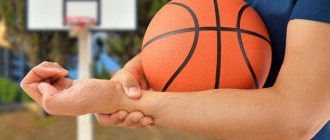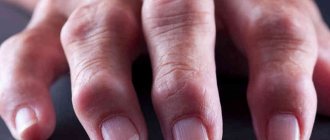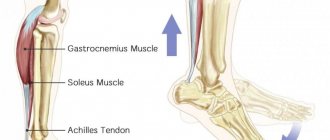The elbow joint of every powerlifting or bodybuilding athlete is the most vulnerable point. The main specificity of training and exercises of this sport is a set of strength exercises, which puts a huge load on the musculoskeletal system of the elbow joints.
There are several exercises in powerlifting that place enormous stress on the elbow and shoulder joints. Such exercises include deadlifts, bench presses and squats.
In bodybuilding, elbow injuries most often occur due to exercises performed repeatedly. Then the bones are forced to move along a trajectory that is unnatural for them. Such exercises include the French press in a lying position on a bench or standing from behind your head; spreading your arms with dumbbells to the sides or doing push-ups on the uneven bars with a deep amplitude can also be fraught.
Professionals should not think that such an injury can only happen to beginners. Beginners may simply, out of ignorance, incorrectly calculate the weight load, perform the required exercises incorrectly, or simply perform the movements too abruptly. The cause of injury in experienced athletes is most often an overestimation of their own capabilities, and they may also forget that ligaments become weaker with age. Professionals simply overload the elbow joints, which causes injury.
Sports injuries of the elbow joint[edit | edit code]
The structure of the elbow joint
For athletes involved in powerlifting and bodybuilding, the elbow joints are the most vulnerable place. The predisposition to injuries of this kind is explained by the specifics of these sports. Despite certain differences, both powerlifting and bodybuilding are based on a set of strength exercises that place increased stress on the musculoskeletal system of the elbow joints.
The assessment of the skill of powerlifters is based on three main demonstration exercises:
- squatting in the “barbell on the shoulders” position;
- barbell row in the “from the floor” position (deadlift);
- lifting the barbell from the bench in a horizontal position “lying on your back” (bench press).
All of them are equally dangerous, since the main load during their execution is directed to the shoulder joints and elbows.
In bodybuilding, an elbow injury can be caused by long-term regular exercises performed along an unnatural trajectory. This usually includes:
- bench press from behind the head in a standing position (French press);
- French press, performed in a prone position;
- wide, versatile arm raises using heavy dumbbells;
- push-ups with deep amplitude, performed on uneven bars (push-ups on uneven bars).
In such situations, not only beginners, but also experienced athletes can be the injured party. For beginners, the cause of elbow injury is most often sudden movements, unreasonable weight loads and ignorance of the basic rules of exercise technique. Those who are experienced in practice often pay the price for ignoring age-related changes in the elbow joints, thereby exceeding the maximum permissible load norms for their age.
Diagnosis and symptoms of an injured elbow joint[edit | edit code]
The elbow joint has a complex anatomical structure, which makes it both strong and vulnerable. It is a complex connection of the shoulder bone with the radius and ulna bones of the forearm. There are no blood vessels in the cartilage, so the nutrition of the joint tissue is slow and occurs only through synovial fluid. It is not surprising that long-term training accompanied by lifting heavy weights has a destructive effect on the elbow joints. The consequences of prolonged uncontrolled exposure through strength exercises are in most cases disastrous and without proper treatment can lead to severe arthritis.
Problems with the elbow joints, as a rule, do not arise overnight, but accumulate over years. The first signs that strength athletes should pay special attention to are mild pain and a slight decrease in the working amplitude of the joint during training.
Occupational elbow diseases among many “siloviki” are epicondylitis and tendinitis. Epicondylitis is accompanied by severe progressive pain, which increases when you try to clench your hand into a fist or hold any object in it.
The cause of acute pain in epicondylitis is inflammation of the ligamentous mechanism of the elbow, which is caused by a decrease in metabolic processes. With this disease, the joint is not subject to swelling or redness and retains its normal appearance. Epicondylitis most often occurs in athletes who have crossed the thirty-five year age mark.
Elbow tendonitis is accompanied by inflammation of the tendon tissue. The cause of this disease is training overload. Pain occurs during active movements that involve the injured tendon. Probing the tendon also causes painful discomfort. With passive exposure there is no pain. The temperature of the skin in the area of the damaged tendon is increased, and the slightest movement of the joint is accompanied by a characteristic crunch.
Damage to the capsular-ligamentous apparatus.
Diagnosis of this injury in the acute period is difficult. The possibility of rupture of the capsule and ligaments is indicated by an indirect mechanism of injury and a significant degree of physical effort. Symptoms of injury are comparable to those of a bruise, but the localization of swelling, subcutaneous hemorrhages and pain along the lateral surfaces of the joint deserve attention. Convincing diagnosis of damage to the collateral ligaments, especially partial ruptures, is possible only with full extension in the joint. Complications of damage to the capsular-ligamentous apparatus are often impaired mobility and less commonly instability of the joint.
Iron Health
For athletes actively involved in bodybuilding and strength sports, the elbow joints are a very vulnerable place to injury. The predisposition to such injuries is explained by the specifics of these sports. Despite some significant differences, bodybuilding and powerlifting are based on heavy compound exercises that place increased stress on the musculoskeletal system of the elbow joints.
If you take the main powerlifting exercises - the squat, bench press and deadlift - they all put equal amounts of stress on the shoulder and elbow joints.
In bodybuilding, elbow injuries can be caused by using exercises for a long time that are not entirely natural. Such movements include:
- French press standing
- French bench press
- Dumbbell flyes using heavy weights
- Dips with deep amplitude.
It must be said that not only beginner athletes, but also athletes with extensive training experience are susceptible to injuries to the elbow joints. For beginners, as a rule, such injuries are caused by sudden movements of exercises, the use of excessive weight, as well as serious violations of the technique.
Experienced athletes often suffer from elbow injuries due to exceeding the permissible load on the joints, which, under the influence of age-related changes, lose their strength qualities.
Symptoms of an Elbow Injury
The elbow joint has a complex structure that makes it both strong and very vulnerable at the same time. This joint is a connection between the shoulder bone and the radius and ulna bones of the forearm. The peculiarity of the structure of the elbow joint is that there is a large volume of cartilage tissue, the nutrition of which is slow. This is explained by the fact that there are no blood vessels in these tissues, so synovial fluid acts as the main transport of nutrients. It is clear that constant excessive stress on the elbow can lead to negative changes. Moreover, these changes are often irreversible, in particular, the development of severe arthritis
Beginning problems with the elbows do not manifest themselves quickly and like an avalanche - pathological changes in the elbow joint accumulate over the years. The first signs of injury may be slight pain and a decrease in the amplitude of exercises during training.
In general, there are two forms of elbow disease:
- Epicondylitis
- Tendinitis
In the first case, there is acute pain in the elbow, which intensifies when you try to squeeze your hand or hold any object in it. The cause of pain here is inflammation of the ligaments, which develops with a decrease in metabolic processes. There are no external changes in the elbow. This disease most often occurs in athletes over 30 years of age.
Elbow tendinitis is an inflammation of the tendon tissue. Most often, this disease occurs with constant excessive load on the elbow joint. Painful sensations actively manifest themselves when moving and palpating the tendon area. In addition, any movements are accompanied by a crunching sound. Prevention and treatment methods
The very first step in treating an injured elbow joint is to ensure complete rest. Sometimes doctors advise temporarily immobilizing the elbow by applying a light plaster cast.
For inflammation of the joints, the drug Ibuprofen helps well, as it reduces inflammation and also has an analgesic effect. This medicine is available both in the form of tablets and ointments (gels).
If there is no positive result for a long time, injections of antibiotics and corticosteroids are used in treatment. Currently, the most progressive methods of treating such injuries are laser exposure and shock wave therapy.
It should be noted that even during an injury, doctors do not advise completely giving up physical activity. Light physical exercise will be very useful and indispensable for the speedy functional recovery of the elbow joint.
Athletes who have suffered from similar injuries in the past need to structure their training programs to avoid excessive stress on their elbows. In this case, you should exercise in elbow bandages, which will provide the necessary compression support to the joints.
Prevention and treatment of elbow injury[edit | edit code]
Elbow bandage (use an elastic bandage)
The first treatment for an elbow joint injured by physical activity is rest. In some situations, doctors advise temporarily immobilizing the elbow by placing a light plaster cast on it.
To reduce pain and eliminate inflammation, warming ointments are often used before training, 1-2 days after the injury.
The drug Ibuprofen perfectly relieves inflammation of the joints with epicondylitis. This non-steroidal drug has excellent antipyretic and analgesic properties. Ibuprofen is produced not only in the form of tablets, but also in the form of ointments (gels), which are carefully rubbed into the area of the sore elbow joint several times a day. The drug Nurofen, which contains ibuprofen and codeine, which work well together, has similar pharmacological properties. This remedy has been successfully used to relieve pain.
If there are prolonged absence of positive results during the treatment of tendinitis, injections of corticosteroids and antibiotics are administered into the area of the inflamed tendon. Relatively new progressive methods of treating sports injuries to the elbow are laser exposure and shock wave therapy.
It should be noted that doctors still do not recommend an absolute refusal from physical activity of damaged elbow joints. Light exercises with minimal load will not only do no harm, but will also contribute to the speedy functional recovery of the elbow joints after power sports injuries.
Athletes who have had an elbow injury in the past should not only adjust their exercise system, but also conduct classes wearing preventive elbow braces. They will create effective compression support for the joints.
Remember! A reasonable approach to training, without fanaticism and a rapid increase in loads, is guaranteed to prevent dangerous joint injuries.
An integral part of treatment is preventing the destruction of cartilage and accelerating its regeneration. This problem can be solved by using sports supplements such as methylsulfonylmethane, glucosamine and chondroitin sulfate. The effect of their use is visible no earlier than after 1-2 months and persists for 2-3 months after stopping the drug. Therefore, in order to achieve the best results, these drugs are prescribed in long repeated courses over several years.
Read also[edit | edit code]
- Anatomy of the elbow joint
- Elbow and forearm
- Elbow joint in children (anatomy)
- Sports injuries
- Elbow ligament damage
- Lateral epicondylitis - treatment
- Medial epicondylitis - treatment
- Pain in the back of the elbow joint
- Compressive neuropathy of the radial nerve
- Cubital tunnel syndrome
- Hyperextension in the elbow joint
- Taping the elbow joint
- Diseases and injuries of the elbow joint during sports
- Tendopathies of the elbow joint in athletes
- Elbow instability
- Osteochondritis dissecans of the head of the humeral condyle
- Traction apophysitis
- Deforming arthrosis of the elbow joint
- Herniated disc
- Sports spinal injury - treatment
- Shoulder Sports Injuries - Treatment
- Sports knee injury - treatment
- Sprained ligaments - treatment
- Supplements for Ligaments and Joints
Damage to the capsular ligamentous apparatus
It is not always possible to diagnose the disease at its very peak, because the injury is very difficult to recognize. Most often it is determined with maximum physical effort by an indirect mechanism of damage. The symptoms are extremely similar to a regular bruise, but the swelling is more localized, pain occurs on the sides of the joint and hemorrhage appears under the skin. Damage to the collateral ligament, especially when it is partially torn, is determined only after the joint has been fully extended. The greatest manifestation of the injury is instability of the joint and complicated movements.
